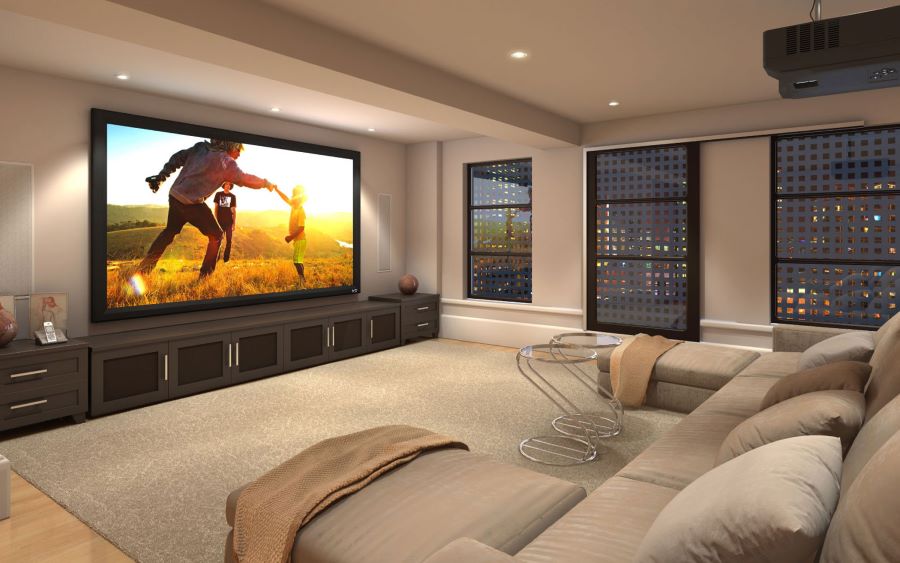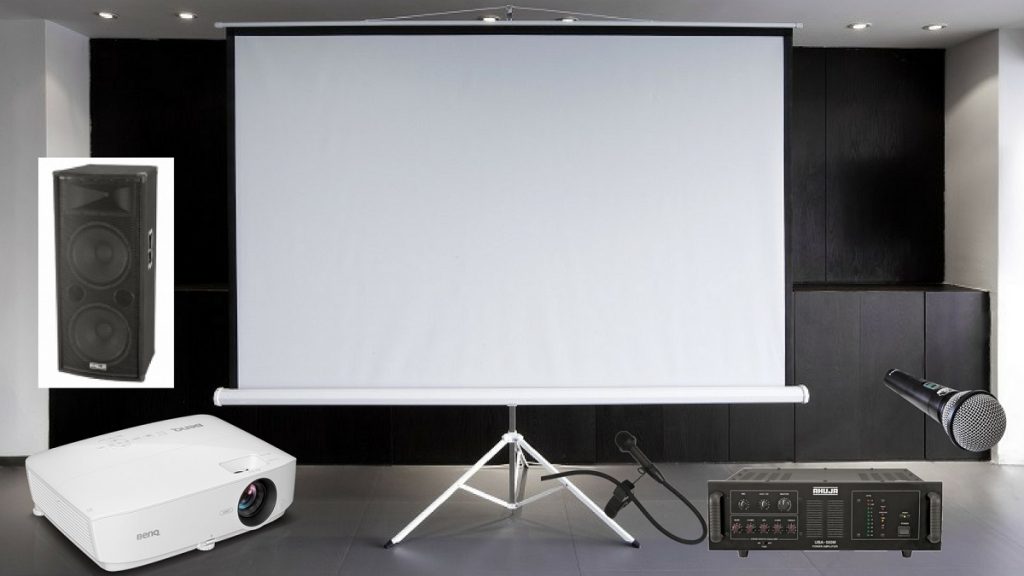Projector screens come in different sizes, and because of that, it is important to know how to measure and calculate the proper one for your needs and home. But, when buying a projector and wanting to know the exact length and width it should be, you will need to use some simple, basic math.
So, if you are thinking about bringing the cinema experience into your home by purchasing and putting a projector inside, you are probably wondering how to measure projector screen size. And I wrote this article to show you how to precisely do that and get yourself the optimal size of a projector screen that will perfectly fit your home. So, without any further ado, we can start.

How to Measure Projector Screen Size
The one thing I can’t tell you is what is the ideal size of a projector screen for you. That depends on many factors, so it is different for everyone.
The size depends on the size of the room where you plan to set the projector screen. The bigger the room, the bigger the screen should be, allowing more people to be entertained.
Another important thing is how far from the screen you plan to be seated. If you’re further away, then a bigger screen is better. So let’s see different ways to calculate your ideal projector size.
How to find the projector screen’s diagonal size
Finding the diagonal screen size is the simplest method. You will need to measure the distance from the bottom left corner to the top right corner. But this is possible if you already have a screen at home and need to know the diagonal size for buying a new one.
But, if you need to calculate the diagonal screen size and it is your first time buying a projector screen, there is another way to calculate that. To calculate the diagonal, you must know the aspect ratio of the screen you want to buy. I will use the 16:9 ratio as the most common one. So what you need to do is to turn 16:9 into a fraction and then multiply it with the width. Then, you need to use the Pythagorean theorem.
As you probably remember, this theorem is A2+B2=C2. But let’s make things easier. It will be better to change this to W2+H2=D2, where W stands for width, H stands for height, and D stands for the diagonal, so the result you will get is the number you were searching for.
Also read: How to Fix a Projector Screen

How to calculate the width or the height using the aspect ratio
As 16:9 is the most common ratio used for projectors, you have probably seen it everywhere. It can be 21:9, 4:3, etc., but do you know exactly what this means?
To explain this, I must use an example. So let’s take the 16:9 aspect ratio as an example. The screen with a 16:9 ratio has a width that is 16/9 times its height. Or, even simpler, it has 16 segments of width for every 9 segments of height.
If you know the width and need to find out the height of your projector screen, that is easy. If the aspect ratio is 16:9, you need to divide 16 by 9, which is 1.78. Then multiply this number by the width, and the number you will get is the height.
If you want to calculate the width of a projector, look at how many inches it is high and what is the aspect ratio. So, if your screen is 80″ high and has a 16:9 ratio. To find out its width, use this formula – 80*16/9. In this case, the width of your screen projector is 142.2″.
Various Aspect Ratios
There are other different ratios besides the 16:9 aspect ratio. Even though that is the most widely used one, let’s take a quick look at all the others, so you will understand better what is the best one for you.
1:1 ratio
The 1:1 aspect ratio is a square screen, meaning that the screen height and the width are equal. This aspect ratio is not so common today, as it is mostly used for older media content and slides.
4:3 ratio
The 4:3 aspect ratio was popular before the widescreen or 16:9 aspect ratio came out. More precisely, TVs in the 40s and 50s were using this format. Today, the 4:3 ratio is mostly used by schools because it doesn’t take up too much space.
16:9 ratio
If you are a sports fan and love watching sports, you probably already know that this is the ratio in which the sports games are shot. 16:9 is also known as Widescreen or HDTV format, and this is the most commonly used aspect ratio in projector screens today, even though this format produces one black bar at the bottom of the screen and one black bar at the top.
16:10 ratio
16:10 aspect ratio is also very common, as laptops and tablets are the devices that use this format. Even though it is quite similar to the 16:9, there’s a difference in the resolution, so the 16:10 ratio will provide you with a better one.
2.35:1 ratio
The 2.35:1 aspect ratio is known as the cinemascope format, which I recommend if you plan to build a big home theater. This format is wider than 16:9, and you can find even bigger ones, but they might be too much for your home.
Conclusion
I truly hope that these guidelines will help you learn how to measure projector screens and get the ideal one for your room. As you can see, calculating the proper projector screen size for your home isn’t as difficult as you thought. Ultimately, it is all up to you and what you’re planning to achieve, so take as much time as you need to do the calculations and get the ideal projector screen size for your home.